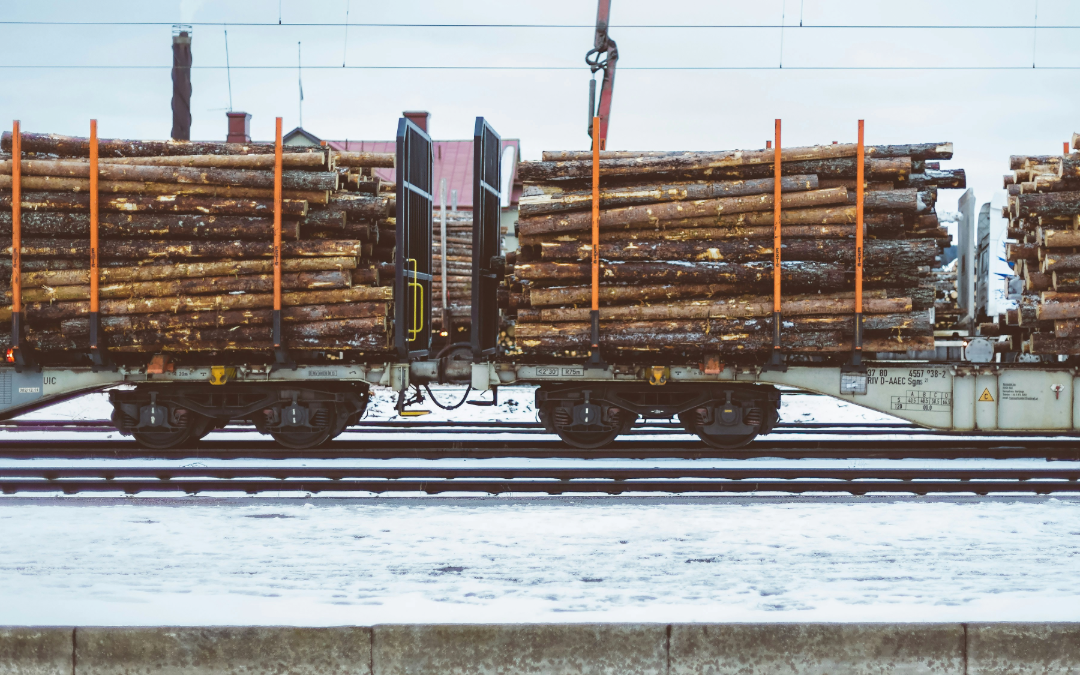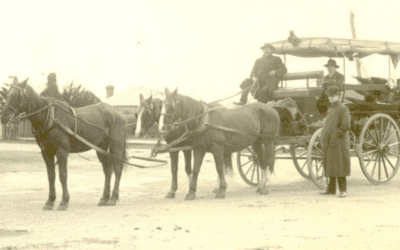The United States Lumber and Wood Industry is a supporting structure of the nation’s economy. With an average sales figure of $237 billion and providing 474,239 jobs, the industry’s influence is extensive. In this blog, go beyond the building and unpack the lumber industry, from forest to finish!
Article Overview
Building Green Initiatives
The industry’s commitment to sustainability is another noteworthy aspect. The Biden Administration’s $34 million allocation to promote sustainability in the wood products economy illustrates this shift. These funds are channeled towards projects focusing on small-mass timber products, creating new supply sources for wood product producers.
Furthermore, the industry is adopting greener practices in response to growing consumer preferences for sustainability. The U.S. Department of Agriculture’s recent investment of $43 million is expected to create new opportunities in the wood products sector.

What to know about the lumber supply chain
The lumber supply chain is a complex process that starts with harvesting trees from forests and ends with delivering finished lumber products to end-users and consumers. The industry is a vital part of the economy and is essential in providing products and materials to build the final product.
Stage 1: Forest Management and Raw Material Acquisition
The first step in this stage involves managing forests for timber production, which includes tree planting, thinning, and harvesting. Forest management techniques are crucial to ensure a sustainable timber supply while preserving the environment’s overall health. Furthermore, sustainable forestry practices, such as using certified wood from the Forest Stewardship Council (FSC), ensure the wood comes from well-maintained forests.
Stage 2: Log Transportation
After harvesting the trees, workers transport them to sawmills for processing. The stage involves moving logs from the forest to the sawmill, typically by trucks or trains.
Modes of transportation:
- Truck: Most lumber products are transported by truck, typically flatbeds. Flatbed trailers are often used due to their ease of loading and unloading, protection from the outside weather, and being able to handle oversized loads. The market regards wood as an overweight commodity when large quantities of lumber building materials are necessary for construction projects. Most lumber trucks have flatbed trailers with 40 to 48 feet of loadable length, are approximately 8 feet wide, and have a capacity of 48,000 lbs.
- Rail: Rail transport is common for shipping whole logs or wooden utility poles to processing centers. Railroads ship lumber on center-beam rail cars, which can carry more than 200,000 pounds per car. Rail car manufacturers have optimized the design and structure of these vehicles to ensure the smooth transit of lumber, plywood, OSB, wallboard, fence posts, mass timber, construction materials, and other building supplies.
- Ocean carriers: For imports and exports, lumber ships overseas in intermodal containers hauled by ocean carriers. About 30% of America’s lumber is imported, mainly from South America.

Highlighting top lumber manufacturers and suppliers
Established in 1909 and headquartered in Charlotte, MI, L.L. Johnson Lumber Mfg. Co. is a custom manufacturing company. They provide a variety of lumber types, including softwood, hardwood, exotic, and thermally modified lumber.
Addison Building Materials, a family-owned and operated supplier, has served the construction industry since 1947. Located in Arlington Heights, Illinois, they provide a variety of lumber types for commercial and industrial building materials.
Quality Support, founded in 1992 and located in Scottdale, PA, manufactures custom industrial lumber. Their product range includes heated, non-heat treated, pressure, and rough-cut lumber in soft and hardwood variations. They also offer contract packaging, design, export packing, and storage services.
Founded in 1969 and based in Sulphur, LA, Kennison Forest Products, Inc. is a wood distributor specializing in Douglas fir laminated veneer lumber. Additionally, they provide services such as embossing, proof testing, and inspection.
Universal Forest Products is a lumber build supplier for manufactured housing, providing wood products to retailers. UFP Industries, with its founding in 1955 and headquarters in Grand Rapids, Michigan, operates 221 facilities globally to provide services across different regions.
Wood you believe it? Branching out into products
Furniture and wood manufacturing is a complex industry, with a global production volume estimated at 450 million units in 2020. The industry’s market value was $582.64 billion in 2020 and is projected to reach $727.61 billion by 2028. But what goes into the making of these products?
Plywood and Building Lumber
The foundation of a building requires the appropriate type of lumber. The structure of a building involves various aspects, including headers in ceilings and weight-bearing beams, to ensure the weight of the building is secure and stable.
Plywood is an engineered wood product, made by pasting together thin layers of wood veneer. The cross-graining technique used in its production improves strength and stability, making it a highly versatile product used in a wide range of applications, from furniture and cabinetry to building construction.
Mills commonly process softwood species like pine, spruce, and fir, as well as hardwood species like oak, maple, and cherry, into building lumber. The choice between hardwood and softwood depends on the specific application. Hardwood’s durability and strength make it a common choice for furniture, flooring, and high-quality interior finishes. Softwoods, which are generally more economical and easier to work with, frequently serve as materials for window frames and paneling used by builders.
Both plywood and building lumber are specifically selected to ensure the best quality for the end product. They are then cut, shaped, and finished according to their intended use. The final products contribute significantly to the diverse range of items produced by the global furniture and wood manufacturing industry.

Kitchen Cabinets
Kitchen cabinets primarily consist of wood and wood-based materials, such as hardwood lumber, plywood, medium-density fiberboard (MDF), particleboard, and melamine. Carpenters skilled in millwork and custom carpentry hand-craft each piece for custom cabinets. Manufactured cabinets, primarily utilizing particleboard and plywood materials, are often in production overseas.
The finishing process involves several steps, including sanding the door and drawer front surfaces, applying stains and specially formulated wood sealer with pressure, and oven-curing. The final product is either sealed, stained with several coats of protective finish, or shipped unfinished to the marketplace.
Solid and Engineered Wood Flooring
Solid wood floors consist of planks crafted from a single piece of wood with tongue and groove edges. The trees selected for flooring are chosen by tight grain and contain a few numbers of knots. After marking the trees, the logs are cut into rough planks using various cutting methods. Including flat or plain sawn, quarter sawn, and rift sawn.
Engineered wood flooring is built by gluing together several wood plies, with a veneer of natural hardwood glued on top. The plywood underneath the natural hardwood veneer, referred to as a core board, is made by stacking the plies one on top of another in opposite directions, then glued together. This construction makes the finished planks more dimensionally stable than solid wood planks.
Furniture Manufacturing
Various tools cut and shape raw materials like wood, metal, plastic, and glass into furniture. The choice of material in furniture production varies based on the intended item. For example, wooden furniture may utilize lumber such as softwoods, hardwoods, or engineered wood, while steel or aluminum can make metal furniture. After assembly or shaping, craftsmen apply wood stains and paint before shipping the furniture to the end consumer.
A Leader in Lumber Transportation
KCH Transportation is a leading provider of transportation services for wood byproducts in various industries. Our team of experts is dedicated to delivering byproducts to customers efficiently, providing constant communication throughout the transportation process.






